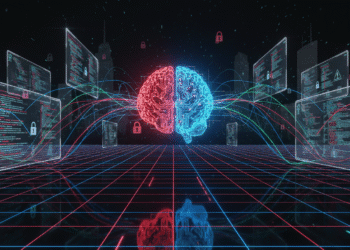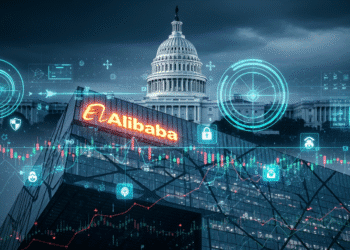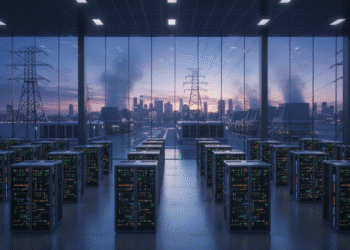YouTube is taking decisive action against the flood of low-quality, AI-generated content that has been overwhelming its platform. The video giant announced significant updates to its monetization policies, targeting what industry experts call “AI slop” mass-produced, repetitive videos created with minimal human input.

The Policy Update That’s Shaking Content Creators
Starting July 15, 2025, YouTube’s Partner Program (YPP) will enforce stricter guidelines around what constitutes “authentic” content eligible for monetization. The platform has always required creators to upload “original” and “authentic” content, but the new policy aims to better define what counts as “inauthentic” in today’s AI-driven landscape.
YouTube’s Head of Editorial & Creator Liaison Rene Ritchie described the changes as a “minor update” to existing monetization policies. However, the implications could be far-reaching for creators who rely heavily on AI-generated content.
The updated guidelines will help YouTube “better identify when content is mass-produced or repetitive,” according to Ritchie. This type of content has technically been ineligible for monetization for years, as viewers often consider it spam.
What Triggered YouTube’s Response
The rise of generative AI tools has made it incredibly easy to produce video content with minimal human involvement. TechCrunch reports that YouTube has become “flooded with AI slop” low-quality media content created using generative AI technology.
Examples of problematic content include:
- AI voices overlaid on photos or recycled video clips
- Channels filled with AI-generated music that have millions of subscribers
- Fake, AI-generated videos about news events that rack up millions of views
- Entirely AI-generated true crime series that go viral
The situation became particularly concerning when even YouTube CEO Neal Mohan’s likeness was used in an AI-generated phishing scam on the platform, despite existing tools that allow users to report deepfake videos.The Growing Problem of AI Content Farms
Content farms have evolved significantly with AI technology. What once required human writers and editors can now be automated entirely. These operations pump out hundreds of videos daily, often stealing clips from legitimate creators and adding AI-generated voiceovers or commentary.
The scale of this problem is staggering. Some AI-generated channels have amassed millions of subscribers by flooding the platform with low-effort content. These videos often feature:
- Text-to-video AI clips with no original footage
- Stolen or recycled content from other creators
- Automated voiceovers over stock images
- Mass-produced content with minimal human oversight
This flood of artificial content threatens to drown out genuine, human-created videos that require time, effort, and creativity to produce.
What Content Will Be Affected

YouTube’s crackdown specifically targets “mass-produced and repetitive” content that lacks significant human input or transformation. The platform clarified that not all AI-assisted content will be demonetized the key factor is whether the content provides genuine value and demonstrates human creativity.
Content at risk includes:
- Videos composed entirely of AI-generated clips
- Channels posting large volumes of similar AI content
- Automated content with no editorial oversight
- Repetitive videos that offer no unique perspective
However, creators who use AI tools as part of a broader creative process may still qualify for monetization, provided their content meets YouTube’s originality standards.
Creator Concerns and YouTube’s Clarifications
The initial announcement sparked concern among content creators who worried the policy might affect legitimate uses of clips, reactions, and commentary videos. Many creators feared their monetization could be at risk simply for using AI tools in their workflow.
YouTube quickly moved to address these concerns. The Verge reports that the platform published a support document clarifying that there are “no changes to our reused content policies” that govern commentary and reaction content.
The company emphasized that using AI to improve content is still eligible for monetization if it meets all other policy requirements. The focus is on filtering out spam and low-quality repetitions, not banning creators from using AI as a tool within their workflow.
Industry Impact and Professional Filmmakers
For professional filmmakers and content creators who use YouTube for distribution, marketing, or community building, this policy shift is unlikely to affect high-quality, original work. However, it serves as a reminder that even AI-assisted workflows must result in content that demonstrates human intention and craftsmanship.
CineD notes that filmmakers using AI tools for B-roll variations, script ideation, or quick captions must ensure their voice, perspective, and editorial oversight shape the final product. The platform’s updated enforcement signals a clear intention to safeguard content that demonstrates human creativity.
This move aligns with broader industry trends toward protecting authentic content creation. As AI tools become more sophisticated, platforms are grappling with how to maintain quality while allowing innovation.
The Technical Challenge of Detection
Identifying AI-generated content presents significant technical challenges. Unlike traditional spam detection, AI-generated videos can appear polished and professional while lacking genuine human insight or creativity.
YouTube’s approach focuses on patterns rather than individual videos. The platform looks for:
- High-volume posting from single channels
- Repetitive content structures
- Lack of original commentary or insight
- Minimal human transformation of source material
This pattern-based detection helps YouTube identify content farms while protecting legitimate creators who occasionally use AI tools.
Economic Implications for Content Creators
The monetization policy changes could significantly impact creators who have built their income around AI-generated content. Channels that rely heavily on automated content production may see their revenue streams cut off entirely.
However, this creates opportunities for authentic creators who invest time and effort in their content. By reducing competition from spam channels, genuine creators may find their content more discoverable and valuable to advertisers.
The policy also encourages innovation in how AI tools are used creatively rather than as replacements for human creativity.
Global Response and Platform Competition
YouTube’s crackdown reflects broader concerns about AI-generated content across social media platforms. Other platforms are watching closely to see how YouTube’s approach affects content quality and creator behavior.
The move could influence industry standards for AI content policies. As the largest video platform globally, YouTube’s decisions often set precedents that other platforms follow.
This policy update also positions YouTube as a platform that values human creativity over automated content generation, potentially attracting creators and viewers who prefer authentic content.
Looking Ahead: The Future of AI and Content Creation

YouTube’s policy update represents a significant moment in the evolution of AI-generated content. Rather than banning AI entirely, the platform is attempting to find a balance that allows creative use while preventing abuse.
The success of this approach will likely influence how other platforms handle similar challenges. If YouTube can effectively reduce AI spam while protecting legitimate creators, it could serve as a model for the industry.
For content creators, the message is clear: AI tools can enhance creativity, but they cannot replace the human elements that make content valuable perspective, insight, and authentic connection with audiences.
The policy takes effect on July 15, 2025, giving creators time to evaluate their content strategies and ensure compliance with the new guidelines. As the digital landscape continues to evolve, this represents YouTube’s commitment to maintaining a platform where human creativity remains central to success.









